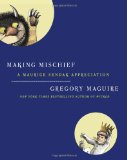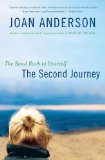Review of The Gift of an Ordinary Day, by Katrina Kenison
A Mother’s Memoir
by Katrina Kenison
Springboard Press, New York, 2009. 310 pages.
Starred Review
I think that Katrina Kenison’s two sons must be right in between the ages of my two sons. I remember reading her book Mitten Strings for God about being the mother of young boys when my boys were young. Now she’s written a book about being the mother of teenage sons who are growing up and finding their way in the world. It resonates with me, because my oldest son has graduated from college and moved out, and my youngest son is about to be a junior in high school.
That wasn’t the only thing I liked about this memoir. In the book, Katrina Kenison deals with so many issues of midlife. They leave their home of many years and find a dream home that needs to be rebuilt. She leaves her long time job. There are so many issues of change and meaning that a woman deals with at this time of life, and I was encouraged and uplifted to read about Katrina Kenison’s journey.
I liked this paragraph about parenting during the difficult times:
“It is always a relief to be reminded that my job is not to control, or judge, or change my son, but simply to help him remember, with words and touch, who he really is. Loving him this way, I am better able to find within myself the faith and patience necessary to survive his painful transformations. I know to hold a space for his beauty, even when it slips from sight. And I come a little bit closer to understanding his true essence, to remembering the goodness that resides just beneath the surface of even his very worst behavior, behavior that is usually rooted in fear and confusion and self-protection.”
Here’s a nice passage about the changes and growth of midlife:
“The world is filled with need. If I am to be of some use, I must first rise to the challenge of my own rebirth and growth, must engage in the gradual, demanding process of discovering the person I am meant to be now and taking up the work I am called to do.
“’Go into yourself, and see how deep the place is from which your life flows,’ the poet Rainer Maria Rilke once instructed an aspiring young writer. The advice might as easily have been written for a middle-aged woman contemplating her emptying nest. The work my friends seem compelled to undertake in their forties and fifties is no longer what they think they should do. It is what they feel, in their deepest souls, that they are meant to do. What the example of their lives suggests, what I desperately want to believe, is that once we have weathered these changes, honored our sorrows and released them, there is also great joy in moving on.”
And here’s a wonderful part about growing up as a mother:
“Now, we’re in a different place and a different time, and I need to become a different kind of mother. A mother who knows how to back off. A mother whose gaze is not quite so intently focused on her own two endlessly absorbing children, but who is engaged instead in a rich, full life of her own. A mother who cares a good deal less than she used to about what time people in her household go to bed, what they eat for breakfast, whether they wear coats or not, and what they choose to do, or not do, with their own time. A mother who, though her protective, maternal instincts run as fierce and deep as ever, manages, in all but extreme moments, to keep those instincts in check. A mother who trusts in who her children are, even if they aren’t exactly who she thinks they ought to be. Who keeps faith in their futures, even when the things they do, and the words they say, give her pause in the present. A mother who remembers, above all else, that the greatest gift she can give to her own two wildly different, nearly grown sons is the knowledge that, no matter what, she loves them both absolutely, just exactly as they are.”
I enjoyed this book tremendously. Reading it is like having a friend to talk to along the exciting and interesting journey of midlife. She makes it feel a little less uncharted and scary.
Find this review on Sonderbooks at: www.sonderbooks.com/Nonfiction/gift_of_an_ordinary_day.html
Disclosure: I am an Amazon Affiliate, and will earn a small percentage if you order a book on Amazon after clicking through from my site.
Source: This review is based on a library book from the Fairfax County Public Library.









